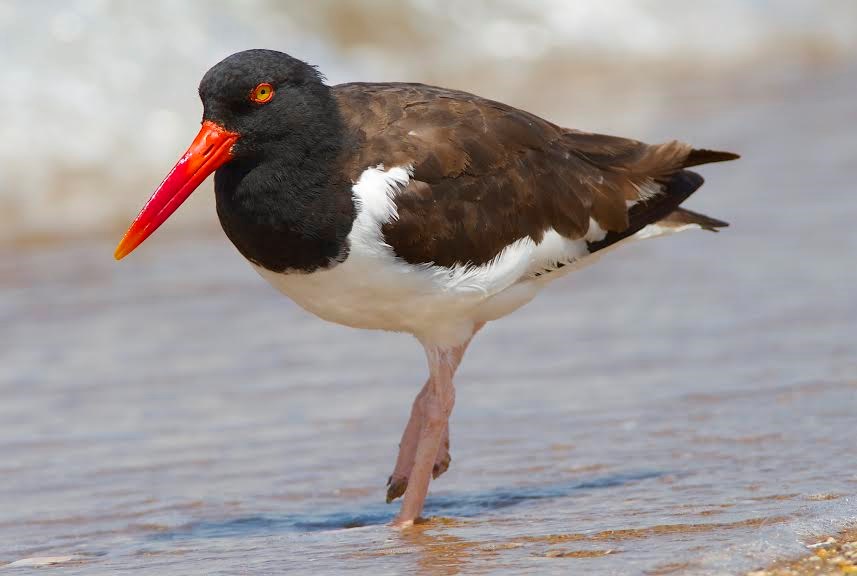
NPS Photo/ Scott Burnet The American Oystercatcher uses its long thick orange bill to eat shellfish and various other invertebrates. In the early spring, oystercatchers will pair up and choose a suitable nesting ground on Gateway's beaches. Since oystercatchers are quite territorial, only a few pairs can occupy one mile of beach, extensive habitat is necessary to maintain nesting grounds. In the 19th century, oystercatchers became practically extinct in the northeast due to increased egg collecting and market hunting. Today the recreational use and development of beaches threatens the nesting sites of these birds. Outdoor enthusiasts should stay clear of nesting oystercatchers since they are highly sensitive to human disturbances. American Oystercatchers (Haematopus palliatus) have a thick black "cloak" of feathers on their head and a thick orange bill. Originally called "sea pie", they were renamed in 1731 when naturalist Mark Catesby observed the bird eating oysters.
Nests primarily on sand and shell beaches, dunes, and salt marshes. Winters along both coasts.
American Oystercatchers are the only birds in their environment with the ability to open large molluscs such as clams and oysters (except for large gulls that drop clams onto pavement). Adults and young birds are idiosyncratic in movement. Some stay in breeding territory year-roudn, while others move hundreds of miles away. Young birds do not follow their parents to wintering locations; some may even migrate in completely different directions in autumn. Breeding birds from South Carolina to Florida generally do not migrate, but will leave breeding territories to join local roosting flocks during the non-breeding season.
American Oystercatchers are numerous but sensitive to development and traffic on the beaches where they nest. Sea level rise also poses a threat to the species.
"American Oystercatcher" American Bird Conservancy American Oystercatcher | American Bird Conservancy (abcbirds.org)
"American Oystercatcher" All About Birds The Cornell Lab: American Oystercatcher Overview, All About Birds, Cornell Lab of Ornithology |
Last updated: January 28, 2021
